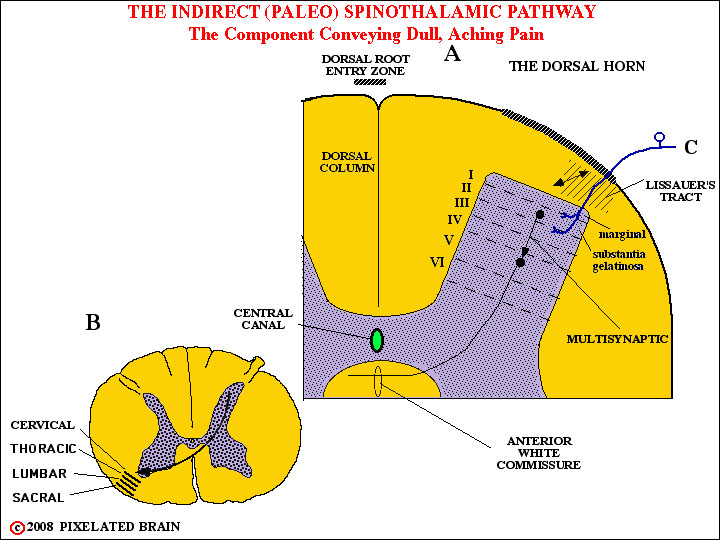
_ _ MOD 4 HOME _ _ previous _ _ FIGURE 4-2a _ _ next _ _ I WANT TO
- Some primary afferent C fibers convey a sensation of long-lasting, dull, aching pain or a burning sensation. It is the most difficult pain to endure and is sometimes described as "slow" because there is a brief but detectable interval between the stimulus and the onset of the pain.
- These C fibers terminate in laminae II and III. Neurons in these laminae project by a multisynaptic route to lamina V.
- Neurons within lamina V send axons across the midline in the Anterior White Commissure to ascend in the anterolateral pathway.
- The axons in this spinoreticular division of the anterolateral pathway do not ascend directly to the thalamus. Rather, they gradually "peel off", as the pathway passes through the brainstem, and terminate on neurons of the reticular formation. Some of them ascend as far as the midbrain, ending within the superior colliculus. This region is called the tectum, and this part of the pathway is often called the spinotectal route.
- Cells of the reticular formation that have received a spinoreticular input relay this information via the central tegmental tract, that terminates within the intralaminar nuclei of the thalamus. This nucleus, in turn, projects broadly to the cerebral cortex.